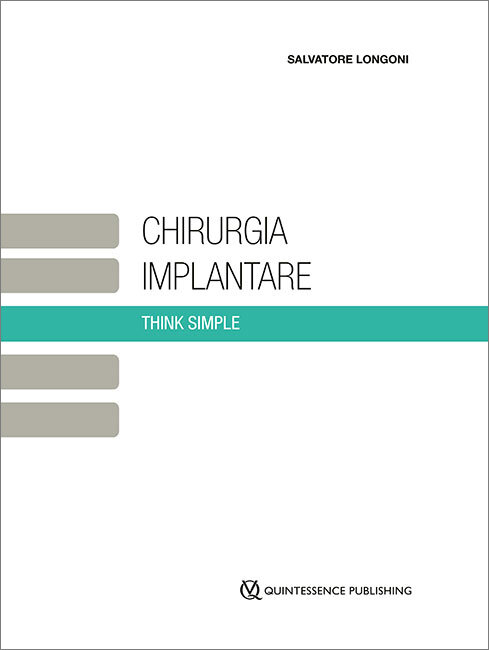The International Journal of Oral & Maxillofacial Implants, 6/2019
DOI: 10.11607/jomi.7622, PubMed ID (PMID): 31711074Pages 1307-1317, Language: EnglishLongoni, Salvatore / Tinto, Manuel / Pacifico, Claudia / Sartori, Matteo / Andreano, AnitaPurpose: There is uncertainty in the literature on whether the presence of keratinized tissue (KT) ameliorates the state of peri-implant tissue health. A systematic review and meta-analysis was performed to synthesize evidence on the association between peri-implant keratinization, defined as adequate (≥ 2 mm) or inadequate (0 to 2 mm), and peri-implant health and stability, measured as tissue inflammation, plaque accumulation, tendency to bleeding, and probing depth (PD).
Materials and Methods: This systematic review adhered to the Preferred Reporting Items for Systematic Reviews and Meta-Analysis (PRISMA) statement and was registered on PROSPERO. According to predefined inclusion criteria, full papers for potentially eligible studies resulted from electronic databases (PubMed, Cochrane, and OpenGrey) and screening of titles/abstracts. Publication bias and risk of bias in primary studies were assessed. The primary outcome was gingival inflammation, measured with Gingival Index (GI) and modified Gingival Index (mGI). Additional outcomes were plaque accumulation (mPI/PI), bleeding (bleeding on probing/modified Bleeding Index), and PD. For each outcome, a random-effects meta-analysis was performed comparing the adequate group (≥ 2 mm, KT1) and the inadequate group ( 2 mm, KT0) KT width. The mean number of implants and proportion of mandibular implants were investigated as potential causes of heterogeneity using meta-regression. Sensitivity analysis was performed excluding low-quality studies.
Results: From 362 screened studies, a total of 15 papers were included in the systematic review, and 8 articles were finally included in the meta-analysis. Heterogeneity was found for all outcomes. The main analysis showed a statistically significant association between adequate KT level and a lower mGI-GI (standard mean difference [SMD] KT1 vs KT0 = -1.25, 95% CI = -2.12 to 0.37, P = .01). For plaque accumulation (SMD = -1.18, 95% CI = -2.36 to 0.00, P = .05), bleeding (SD = -1.99, 95% CI = -4.60 to 0.61, P = .13), and PD (MD = -0.06, 95% CI = -0.13 to 0.01, P = .10), no statistically significant difference was detected; however, the trend of results was in favor of the KT1 group. The sensitivity analysis supported the main analysis conclusions.
Conclusion: The importance of having an adequate KT width around implants was confirmed by this review; adequate KT was significantly associated with less peri-implant inflammation evaluated qualitatively with mGI/GI. No difference was found for plaque accumulation and bleeding, but a positive trend was found favoring implants with adequate KT.
Keywords: keratinized tissue, peri-implant health, systematic review
International Journal of Periodontics & Restorative Dentistry, 4/2007
PubMed ID (PMID): 17726993Pages 368-377, Language: EnglishLongoni, Salvatore/Sartori, Matteo/Apruzzese, Domenico/Davide, Roberto/Baldoni, MarcoMany studies have shown success with immediate loading of dental implants. The purpose of this paper is to report on a procedure that places implants with a sandblasted and acid-etched surface and loads them with a fixed, provisional, immediately loaded mandibular complete denture, all in a single day. The various surgical, prosthetic, and laboratory phases are explained, with particular attention paid to a luting technique that is able to reduce prosthetic misfit. A series of 14 patients was treated with this protocol and followed for a mean of 28.2 months. A 100% implant survival rate was achieved, and all prostheses were in place and functioning at the most recent follow-up.
The International Journal of Oral & Maxillofacial Implants, 3/2007
PubMed ID (PMID): 17622016Pages 478-483, Language: EnglishLongoni, Salvatore / Sartori, Matteo / Apruzzese, Domenico / Baldoni, MarcoThis article presents the case report of the bilateral 3-dimensional reconstruction of a posterior mandible in a 48-year-old woman. Titanium meshes and Regenaform demineralized freeze-dried bone allograft were used for bone regeneration. After 5 months the titanium mesh was removed, and after another 4 months, 4 Straumann sandblasted, large-grit, acid-etched implants were placed, 2 on each side of the mandible. During implantation a bone specimen was collected and sent for histologic examination. The definitive fixed prosthesis was fabricated after an additional 4 months. The clinical and histologic results are shown. The implants were followed for 18 months after implant loading; no signs of bone loss or infection were observed.
Keywords: bone regeneration, demineralized freeze-dried bone allograft, dental implants, titanium mesh
International Journal of Periodontics & Restorative Dentistry, 5/2005
Pages 475-481, Language: EnglishLongoni, Salvatore/Apruzzese, Domenico/Careddu, Giovanni/Sartori, Matteo/Davide, RobertoIn some periodontal cases, biomechanical, esthetic, medical, or economic concerns make it difficult for clinicians to employ either traditional therapy or restoration with an implant-supported prosthesis. To avoid any compromise and ensure a good result in such cases, we chose a removable telescopic prosthesis on natural teeth. In this paper we present a new clinical and technical method for the telescopic prosthesis, and we show that this is a predictable, reliable solution that is easy to realize, inexpensive, and comfortable for patients.




